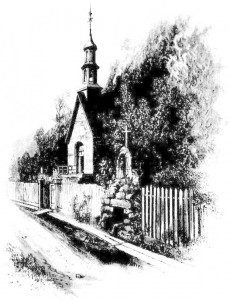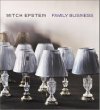by Laurel | December 12th, 2013
11 December 1904
[Note: this piece was published in 1904 and should be considered representative of the time. Initially a bit verbose, as the article continues there is some interesting information on the French Canadians in Holyoke and Springfield. Because of the length, the article has been split into six parts, this is Part III of VI.]
Race, Integrity and Language Preserved to a Remarkable Degree–Causes of the Immigration Movement — Customs and Literature.
The French Canadians have a small but worthy literature of their own. Louis Frechette, the senator, is their poet laureate, and his truly poetic “Legend of a People,” the story of the French Canadians in verse, won him honors from the French academy at Paris years ago. But like all the French, the French-Canadians are particularly found of their songs and ballads. the old French-Canadian mail carrier at the Woronoco, who by the way, fought for the North through the civil war, is a familiar figure to those who pass that way, stamping his feet if it is cold to the tune maybe of a French-Canadian song. In its songs may be learned much of a people’s character. Along with the gayety of the French-Canadians there is also at times a soft and ingratiating pensiveness. It may have been mere chance that has made the crude and melancholy old song, “A la claire fontaine,” which tells of an unfortunate lover, the French-Canadian national chant for all patriotic fetes. And again it may not have been chance. The first stanza of the song runs:
A la claire fontaine
M’en ailant promener.
Je trouval Feau si belle
Que je m’y suis baigne
(Chorus)
Il y a longtemps que je t’aimne
Jamais je ne t’oubieral.
To give another rough translation and to keep a semblance of rhyme this may be given:
At the fountain pure,
As I trod my way,
Found I the water clear
And bathed therein straightway.(Chorus)
Long have I loved thee!
Never shall I forget thee!
Such are the songs of the people as they sing them. But for a direct interpretation of the “habitans” of Canada to the English reader there is nothing that can compare with the dialect poems of William H. Drummond, gathered together under the title of “The Habitant.” It is not the caricature that is given in these verses of Broken English, but the kindly picturing of a people whose humor, superstition and good homely qualities are well reflected. The “moral” of “The Wreck of the Julie Plante” may be quoted as typical:
Now all good wood-scow sailor man
Tak’ warning by sat storm
And go and marry some nice French girl
And leeve on wan big farm.
De win’ can blow lak hurricane,
And s’pose she blow some more,
You can’t get drown on Lac St. Pierre
So long you stay on shore
the old festivals and customs which the French-Canadian maintained in Canada as their best remembrance of their older homes in France they have maintained, if to a l3esser degree since their coming to this country, Most of these festivals are connected with the church, as might be expected from the religious character of the people. To take some of them through their order through the course of the year, New Year’s Day is the time for the great celebration in the French family, the time for the family reunion. It corresponds, in fact, very closely to the American celebration of Christmas. It is at New year’s that the members of the French family exchange their gifts. The period to January 6, “the day of the kings,” is considered as a festival time. The “day of the kings” dates back, as will be surmised to the story of the three wise men. Generally there are special dished, particularly pastries, for which the French are world famous, to be eaten on that day, and good cheer reigns generally. In old France today the custom obtains to bake in the pastry a little china slipper, and the one who finds it in his share is thereby made king or queen of the festival, as the case may be. If it is a man, he chooses his queen; if a woman, she chooses her king; and then the fun begins, the whole family shouting, “The king drinks!” (le roi hoit!), or “The queen drinks!” (La reine hoit!), whenever either raises his or her glass of wine, which is sure on this day to be the best the family can provide. The words in French have a peculiar liquid sound, and it is more difficult than would be imagined to drink one’s glass with a noisy tableful shouting the refrain in unison. From January 6 to Ash Wednesday there is no important festival or observation. Lent , or “Carême,” as the French call it, is, of course closely observed. Easter, next to New Year’s is the great church festival. Forty days after Easter comes the observation of Ascension day, and so on through the church festivals of the Catholic calendar.
But the pilgrimages made in the summer to the famous shrine of St. Anne de Beaupre in Canada, and on which thousands go, deserve special mention. The fete day of St. Anne de Beaupre is the 26th of July. The story of the shrine of St. Anne is a blending of history and tradition with the life and manners of today. The first little church was built about 1650, in memory of the pilgrimage of St. Anne d’Auray in Bretagne. he ice and waters of the St. Lawrence swept it away, and then a new church was begun., the work being done by the pious labor of the “habitans.” As one of these, Louis Guimont, racked with rheumatism, painfully struggled to place three stones in the foundation he suddenly grew a well man. Thence forth “La Bonne Ste. Anne de Beaupre” became famous throughout Canada. Among the pilgrims that flocked to the fete each hear were conspicuous the Christian Hurons and Algonquins. To this day their descendants may be found among the thousands of worshippers whom the steamers carry from Quebec. But not always is the pilgrimage such an easy excursion. Those who have special favors to implore often plod the long journey on foot. A pile of crutches, trusses, bandages and spectacles stands in the church (a new one erected in 1876) to attest the miraculous cures worked by faith and prayer. The side of the old church is marked by a chapel built of the materials of the church. By the roadside close to the chapel is a rough grotto, with a statue of the said in a niche and a cross above it. over the stones of the grotto flows the miraculous water of the spring which is bottled and carried by pilgrims for its healing powers.









